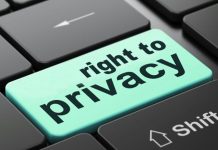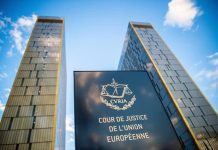This article is authored by Akash Krishnan, a law student from ICFAI Law School, Hyderabad. It discusses in detail the petition filed in the Supreme Court against false allegations and charges made in an FIR against the Petitioners to restrict them from exercising their fundamental right to free speech and expression.
Table of Contents
Introduction
In this case, the provisions of the Unlawful Activities Prevention Act, 1967 (UAPA) were challenged on the ground that it fails the test of over-breadth and is, therefore, liable to be struck down. This case is related to the recent incidents of violence against the Muslim minorities in the State of Tripura. Following this incident, the report was published in the public domain by the Petitioners wherein they listed the true facts of the incident. However, an FIR was filed against them under the provisions of the Indian Penal Code, 1860 and the Unlawful Activities Prevention Act on the ground that their actions resulted in causing public disorder. This FIR was challenged in the Supreme Court and the Supreme Court has now listed the matter for urgent hearing.
Now that we have understood a brief background of the case, let us try and understand the case in detail.
Mukesh & Ors. v. the State of Tripura & Ors.
Brief facts
- On 14th October 2021, during Durga Puja, there was widespread reporting of violence against Hindu minorities in Bangladesh on account of blasphemy.
- The political right-wing forces in the State of Tripura reacted to this situation and started committing acts of violence against the Muslim minorities within the State.
- Several violent protests and processions were led by these right-wing forces against the Muslim minorities. Several offences like arson, looting, targeted violence against Muslim citizens, burning of mosques etc were carried out by these right-wing forces.
- These incidents were widely reported by all the major national and international news media organisations. On 27th October 2021, one of the Petitioners had tweeted from his official account that “Tripura is burning”.
- On 29th October 2021, the High Court of Tripura took suo-moto cognizance of the violence in the state. The State in a brief reply stated the actions being taken by the Government to stop the violence and to provide relief to the victims. The High Court had directed the State Government to ensure that no false articles or news or social media posts should be shared so as to incite violence. It further directed the Government to remove any such false information as soon as it is posted.
- A four-member team consisting of Advocates and the Petitioners visited these affected regions on 30th October 2021 and 1st November 2021 respectively. Based on their interactions with the affected people and the horror they had witnessed, this team published a report on 2nd November 2021 titled “Humanity Under Attack in Tripura #Muslim Lives Matter”, in a press release at the Press Club of India.
- The contents of the report have been briefly summarized as follows:
- Several testimonies of the victims of the horrific violence were recorded wherein they talked about how they were attacked and how their property was attacked, looted and burnt by the right-wing forces.
- Photographs of 12 mosques were added which were attacked and burnt by the right-wing forces.
- Copies of two complaints that were filed by the victims of the violence on 29th October 2021 were attached stating that no FIR was filed in furtherance of the complaints.
- It commented on the failure of the State to act and stop the commission of the crimes and raised the questions of abdication of fundamental duties of the State to protect the people irrespective of religion or minority status.
- It suggested the formation of a high-level inquiry committee to look into the matter and provide justice to the victims along with proper compensation. It suggested that this committee should also grant reliefs for the repatriation of religious places. Public property that was damaged during the incident.
- It demanded that strict action should be taken against all the people who through social media posts had aided in the incitement of violence against the Muslim minorities.
- In light of the same, an FIR was filed on 3rd October 2021 against the Petitioners and other ‘unknown persons’ under Section 13 of the Unlawful Activities Prevention Act and Sections 153, 469, 471, 503, 504, and 120B of the Indian Penal Code and they were asked to appear before the Tripura Police on the same day.
- The present petition was filed under Article 32 of the Constitution of India in light of the targeted violence by the political right-wing forces against the Muslim minorities in the state of Tripura and the attempt of the Police to restrict the free flow of information about the incident by filing criminal charges against the Petitioners under the UAPA who were attempting to bring the true facts of the circumstances to the notice of the public.
- Also, the Constitutional validity of Section 2(o) of the UAPA read with Section 13 and Section 43(d)(5) of the UAPA was challenged by the Petitioners on the ground of inconsistency with their fundamental rights guaranteed under Article 14, Article 19(1)(a) and Article 21 of the Constitution.
Arguments of the Petitioners
- The social media posts that were referred to in the FIR and in the Notice that was issued to the Portioners were not made by them nor were their official social media handles used to make such posts.
- The FIR has been filed against them to restrict them from exercising their freedom of speech and expression and therefore the filing of the FIR should be held to be an arbitrary exercise and abuse of power.
- The Report that was published by the Petitioners indicated the failure of the State and the police to act and prevent the ongoing violence and the FIR was an attempt to stop them from raising their voices against the Government and the police inaction.
- The Report does not include any fact that is false nor does it exaggerate any fact. All the information cited in the Report is based on the true testimonies of the victims and the live photographs that were taken at various places.
- The FIR was an attempt to curb the free flow of information within the State regarding the true events and the Government was trying to mask its failure by diverting this issue to the false allegations against the Petitioners.
- The scope of the term unlawful activity, as defined under Section 2(o) of UAPA, is not applicable to the present circumstances.
- Offences were brought under Sections 13 and 43(d)(5) of the UAPA so that the Petitioners cannot seek anticipatory or regular bail. Thus, the entire attempt was to keep the Petitioners from raising their voice about the incident.
- Article 19(1)(a) grants the freedom of speech and expression. The report was made in furtherance of this right and the Sections of the IPC under which the Petitioners are charged will not be applicable because none of those provisions has the power to restrict the exercise of a fundamental right and the actions of the Petitioners are not barred under Article 19(2) of the Constitution.
Grounds
Quashing of FIR under Article 32
The Petitioners argued that there was no bar on quashing an FIR in a petition filed under Article 32 on the ground that the right to freedom of speech and expression is being affected through this FIR. In light of the same, the Petitioners referred to the following cases:
State of Haryana & Ors. vs. Bhajan Lal (1992)
In this case, the FIR that was based on false allegations was quashed by the Court while exercising powers under Article 32. The Court herein had observed that if the allegations under the FIR are insufficient to constitute an offence that the accused is being charged with, then in such cases the FIR can be quashed. It further noted that if the allegations are false and are not supported by cogent evidence relating to the commission of the offence by the accused, the Court is empowered to quash the same under Article 32.
State of W.B. v. Swapan Kumar Guha (1982)
In this case, it was held that if the FIR fails to disclose the facts surrounding the commission of the offence, then in such cases, the FIR and the investigation in the case can be quashed by the Court while exercising its powers under Article 32.
FIR is against the freedom of speech and expression
Unlawful activities have been defined under Section 2(1)(o) as any act committed by an individual or organisation by words or by visual representation:
- That halts the activities of a territory or a part of a territory of India.
- That disrupts the sovereignty or integrity of India.
- That causes disaffection against India.
Section 13 of UAPA states whoever takes part, commits, abets, or advocates any unlawful activities shall be punishable with imprisonment that may extend to 7 years and shall be liable for a fine. If a person assists in conducting any unlawful activity, then he shall be liable for imprisonment that may extend to 5 years and Section 43D(5) states that no person accused of an offence punishable under Chapters IV and VI of this Act shall be released on bail.
The Petitioners argued that the publication of the report by them does not amount to unlawful activity and thus the provisions of UAPA under which the Petitioners were charged are inapplicable to the present case. They further contended that the police had expanded the scope of the definition of unlawful activity on their own whim and fancy to bring the Petitioners under its ambit. In light of the same, the Petitioners referred to the following cases:
Niranjan Singh Karam Singh Punjabi v. Jitendra Bhimraj Bijjaya (1990)
In this case, the Court held that while applying a law with serious penal consequences on a person, extreme care must be taken to ensure that the authorities do not go beyond the scope of the statute by reading new provisions into it. The authorities should limit the interpretation of the provisions to what was intended by the legislature while enacting the law.
S. Rangarajan v. P. Jagjivan Ram (1989)
In this case, the Court observed that the freedom of speech and expression guaranteed under Article 19(1)(a) of the Constitution can only be limited through the exercise of the provisions under Article 19(2) only in the times of necessity. However, the criticism of the Government and its policies or actions cannot be constituted as a fair ground to restrict the freedom of speech and expression.
Indibily Creative Private Ltd. v. State of West Bengal (2020)
In this case, the Court held that the Constitution does not permit those in authority who disagree to crush the freedom of others to believe, think and express.
Patricia Mukhim v. the State of Meghalaya and Ors (2021)
In this case, it was held that the freedom of speech and expression guaranteed by the Constitution cannot be taken away by the authorities by implicating individuals under false criminal cases unless the speech has caused a disturbance in the public order of the country.
Constitutional validity
Section 2(1)(o) of the UAPA has a very wide range and in some cases could include acts like criticism of the government or public officials even if such acts do not pose a threat to the sovereignty and integrity of India or create public disorder. This provision can therefore be used in a mala fide manner so as to curtail the freedom of speech and expression of the citizens, as it has been done in the present case. Thus, the provision should be declared unconstitutional because the provision has no direct nexus with public order. In light of the same, the Petitioners referred to the following cases:
Superintendent Central Prison v. Dr Ram Manohar Lohia (1960)
In this case, the Court held that the restriction imposed by any provision in the interests of public order has to be a reasonable restriction and such a restriction should have a proximate connection or nexus with public order. It should not be far-fetched, hypothetical or problematical or too remote in the chain of its relationship with the public order.
Shreya Singhal v. Union of India (2015)
In this case, the Court held that remote disturbances of public order by demonstration would fall outside Article 19(2).
Observation of the Supreme Court
The Supreme Court noted the urgency behind the present petition and listed the petition for hearing as early as possible.
Conclusion
The question of law involved in this case is whether the right to freedom of speech and expression, which is a fundamental right, be restricted on the grounds of fair and reasonable criticism of the Government and its actions. From the facts of the case and the FIR, it is clear that the police have used their powers to restrict the free flow of communication within the state so as to minimise the negative effects of the incident on themselves. Only time will tell how the Supreme Court reacts to this question and whether the age-old provisions under the UAPA laws will be declared unconstitutional.
References
- https://www.livelaw.in/top-stories/tripura-violence-supreme-court-agrees-to-give-urgent-listing-to-petition-challenging-uapa-against-lawyers-activists-185298
- https://www.newsclick.in/SC-Agrees-to-Urgent-Hearing-of-Petition-by-Lawyers-Journalist-Against-UAPA-by-Tripura-Police
- https://www.hindustantimes.com/india-news/tripura-violence-sc-to-hear-plea-challenging-uapa-against-journalist-lawyers-10163665532
Students of Lawsikho courses regularly produce writing assignments and work on practical exercises as a part of their coursework and develop themselves in real-life practical skills.
LawSikho has created a telegram group for exchanging legal knowledge, referrals, and various opportunities. You can click on this link and join:
https://t.me/joinchat/L9vr7LmS9pJjYTQ9
Follow us on Instagram and subscribe to our YouTube channel for more amazing legal content.












